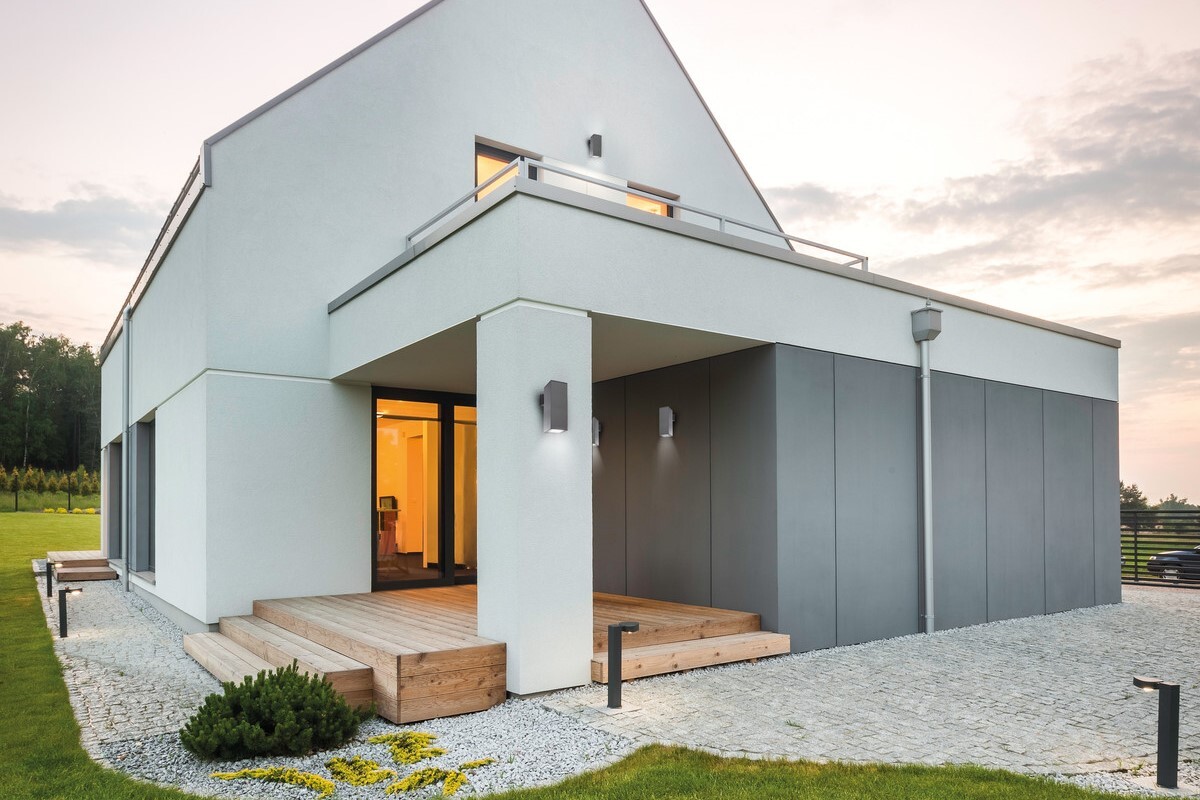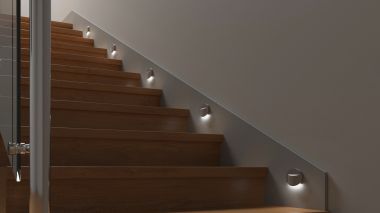4 mistakes that you can avoid when planning façade lighting
The outdoor lighting of a building's, especially the façade, requires almost as much attention as the indoor lighting. It is usually divided into several zones, each of which requires a different type of luminaires. It must be resistant to adverse weather conditions and also easy to maintain. What must you not forget when planning façade lighting? Keep reading.

Safety first
The electrical connections must be done by a professional and even the best tutorials on YouTube will not change it. Separating circuits, routing cables and connecting them is a responsibility for the health and life of users, so there can be no half measures. Safety also means efficient and accurate lighting of the building's surroundings, which, for example, will allow to spot an intruder on your property in time or not trip over a garden hose put away after watering the plants. Thus, even with a small number of façade luminaires, you will need a professional outdoor lighting scheme prepared by a qualified professional.
The light cannot dazzle
This may seem obvious, but amazingly often you can see façade lighting, beaming with bright light in all directions. This positioning of the luminaires is doubly impractical, as, in addition to dazzling people passing under the walls, it also unnecessarily lights up the bedroom windows on the upper floors, making it difficult for people to fall asleep. If you don't want to switch off the outdoor lighting before going to bed, choose luminaires with light beam adjustment, such as Kanlux REKA LED.
It allows to create a unique lighting effect when switched on. Thanks to the masking flaps inside this luminaire, you can set the directions and widths of the light beams yourself. It lights in two directions - at the top and bottom, and you can adjust the light independently. By bringing the upper masking flaps closer, you will create a thin line of light at the top, and by leaving them open at the bottom you will create wide fans of light, illuminating the lower part of the façade and the parts of the ground closest to it. Kanlux REKA LED is perfect for lighting façades of buildings, terraces, balconies and external walls of arbours.
Appropriate lighting around the entrance area
What should the building entrance lighting be like? For most users, the answer is functional, i.e. enabling to open with a key and resistant to weather conditions. Slightly fewer people think about lighting their way to the door as well, making it easier to return with heavy shopping, as well as allowing householders to clearly see who is approaching the entrance. If you want to combine these aspects, choose Kanlux SORTA. The opal lampshade evenly disperses light. They are made of glass and aluminum. Their black and white colouring matches almost every scenery. The protection rating IP44 will ensure long-lasting use of these lamps.
If you want the entrance to look more effective, you can "play" with the focus of the light by using different light sources. Direct bright light to areas that you want to highlight or visually enlarge, and lighten others less intensely to emphasise the effect of depth.
Additional lighting
Why is additional lighting important? Many buildings have been fitted with external stairs leading to independent entrance to the upper floors. In order to prevent discomfort resulting from shifting your eyesight from the illuminated steps to the walls of the building, you also need to take care of the façade. Kanlux FORRO luminaires can be a great choice. They are characterised by a simple but original design and a delicate visual effect; the light is directed towards the façade, creating a light rim around the dark, perfectly round luminaire. They have a protection rating IP54, so you can use them as outdoor luminaires, but also as indoor luminaires, which gives you the opportunity to create interesting arrangements.
Why is it worth choosing motion sensors
The fact is that motion sensor lighting is convenience and economy in one. You don't have to turn the light on and off every time you go outside. The light will only work when it is really needed. Sensors, such as Kanlux ALER MINI will detect any movement even from a distance of 8 metres, the light will switch on and after several seconds it will switch off (if the movement stops). A good solution is a minimalist design luminaire, to which you connect a motion sensor pointing in the right direction. Choose, for example, Kanlux INVO luminaires with an original lighting effect.
Summing up, to plan the outdoor lighting of your house, invite a professional who takes on issues such as the choice of voltage (mains or low), connection points, location and power of lamps, electric shock protection and much more. And the most important issues are left with you - choice of luminaires to match the design of the façade and the surroundings of your house. Focus on the quality and don't just look at the price. The cheapest models of luminaires are not tested rigorously enough, so their lifespan can be short and their safety questionable.
Other articles
 How to light your home library and reading space?
How to light your home library and reading space?
Reading is one of those activities that truly allows you to pause—to break away from everyday life...
 Lighting for Mezzanine Floors and High Spaces — Challenges and Solutions
Lighting for Mezzanine Floors and High Spaces — Challenges and Solutions
Not every space has the grandeur of a cathedral — and that is quite fortunate. Low interiors, mezzanine...
 Staircase and Corridor Lighting — Safety and Design
Staircase and Corridor Lighting — Safety and Design
Stairs, corridors and other passageways have specific lighting requirements. This is not only for safety...
 Smart lighting management in your home – where to start?
Smart lighting management in your home – where to start?
Smart lighting systems are not only a matter of convenience, but also a conscious step towards better...
 How does LED lighting work?
How does LED lighting work?
The LED lighting in our homes, offices and public areas is here to stay. Today, it is hard to imagine...
 How can lighting create a spa atmosphere in your bathroom?
How can lighting create a spa atmosphere in your bathroom?
When designing a bathroom, not only aesthetics but also lighting matter—when selected appropriately,...